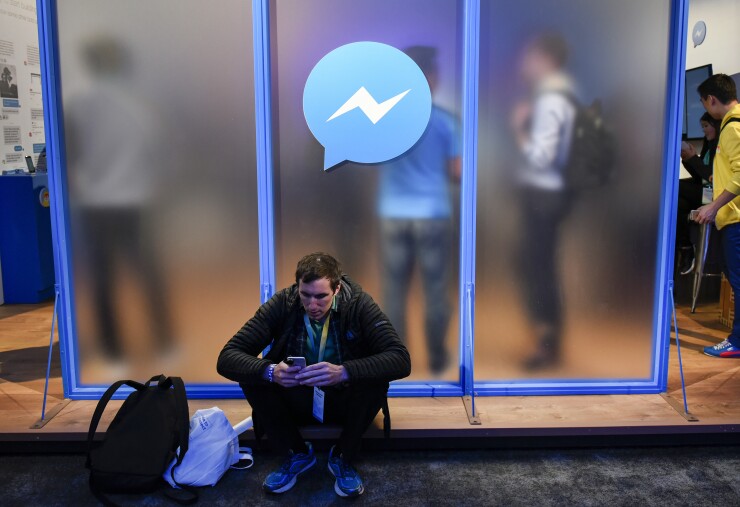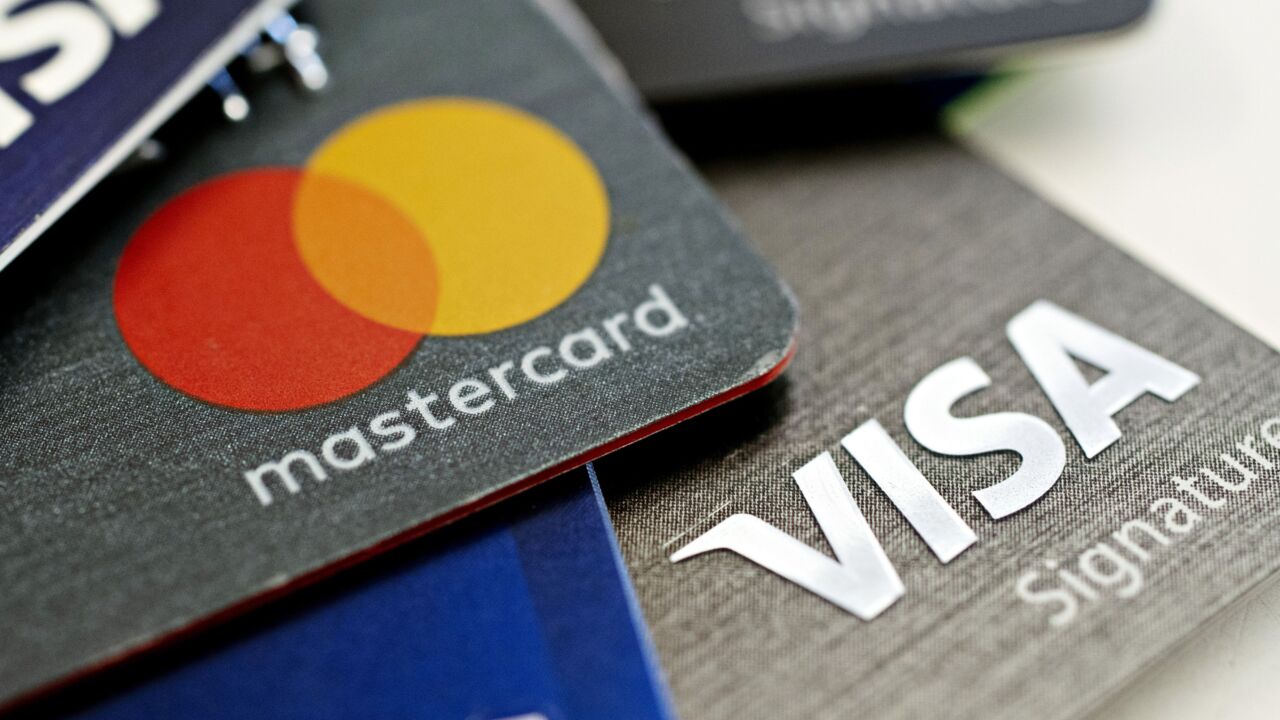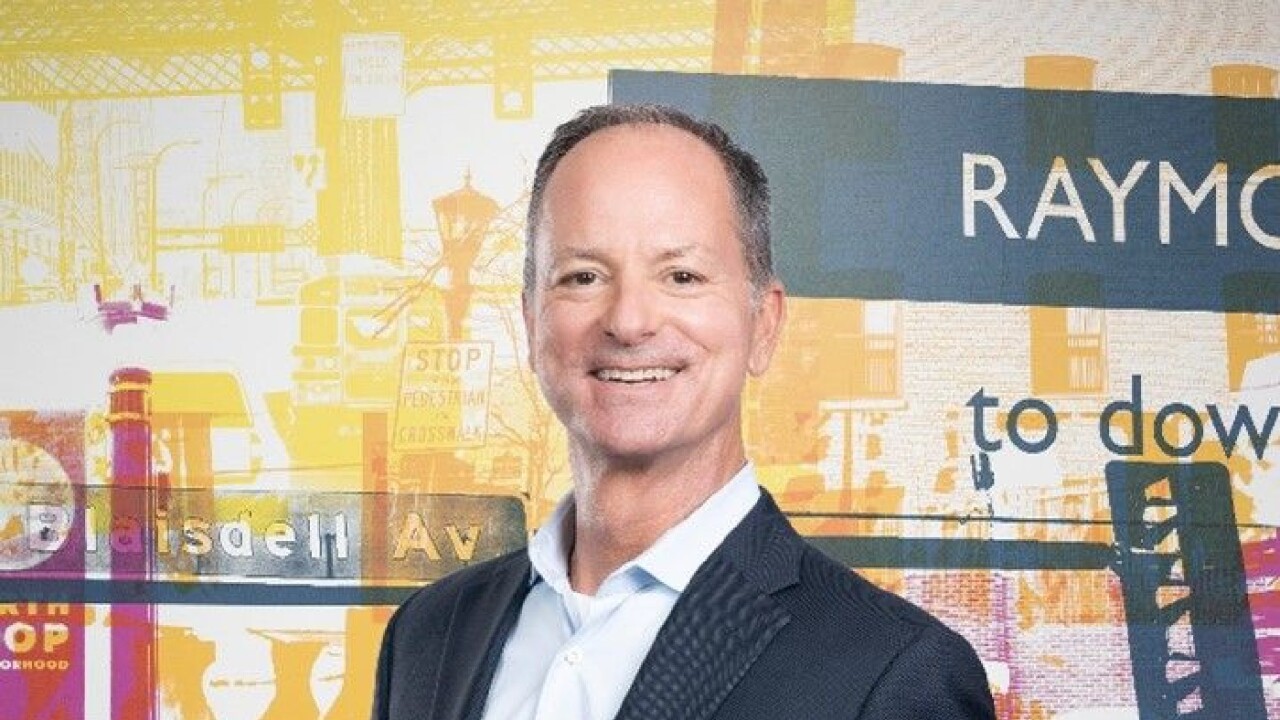It’s been a rough year of politically charged headlines and financial woes for Facebook, pressuring the social network to do more with its Messenger app's huge and largely unmonetized user base.
Messenger has built-in P2P payment capabilities and has already piqued the interest of businesses that want to develop the chat app into a platform for commerce.

Facebook has been adding
Social networks can develop what is essentially an “in-app” purchase within the network, said Thad Peterson, a senior analyst at Aite Group. “So, if a merchant wants to offer something for sale on the network, this would create the potential for a very simple one-click purchase capability so a purchase could be fast and simple for the customer.”
Most of
These include Click-to-Messenger ads, which open a conversation with a business when a consumer clicks or taps on a business' ad in News Feed, Instagram or Messenger. People can return to this message at any time on any device with Messenger installed to continue the conversation. Click-to-Messenger ads can open a one to one conversation or an automated experience.
There are also sponsored messages, or a type of paid ad that is sent directly to everyone who currently has an open chat with a company's Facebook Page. Sponsored messages may be sent outside the 24-hour standard messaging window, and will be labeled 'Sponsored' in the chat.
Another ad is Messenger Inbox Ads, which are an ad placement in the home tab of the Messenger mobile app. When a person taps on an ad, they will be sent to the destination chosen during ads creation. This could be a website or a Messenger conversation.
Facebook also provided examples of several collaborations that demonstrate traction for Messenger as a business payment app.
“Messenger has proven to be a valuable channel for people to send and receive money, and for businesses to process transactions,” said John Anderson, Facebook's product management director.
KBank, one of the major banks in Thailand, recently launched a feature that allows businesses to accept bank transfers via their Facebook Page inbox. People will be able to pay with a bank transfer without leaving the conversations via KPlus app-switch integration.
Wahaca, a Mexican restaurant chain operating in 25 locations across U.K., enabled customers to pay using an integration with Messenger at one of their locations. As a result, 15% of all payments were received in Messenger, and their waitstaff also saw 15-20% higher tips.
And Mastercard is piloting its Masterpass QR bot to help business owners move beyond cash transactions to accepting QR code payments. Ecobank and Zenith Bank supported this inaugural program. To get started, businesses can send a request to the bot to enable QR payments, receive approval from the bank, set up an account and start accepting digital payments. Once this process is complete, business owners can print and display the QR code in their stores or save the code on their phones.
“Because they often happen in the context of a conversation in Messenger, peer-to-peer payments make it easier to know who you’re sending or receiving money from since you can easily navigate to their Facebook profile,” Anderson said. “In addition, many businesses are leveraging Messenger as a way to connect with customers and enable transactions.”
P2P's ability to support merchant payments is expected to get stronger over time, according to Crone Consulting.
The consultant estimates the value of P2P payments to businesses in 2017 as 3% of a total P2P market of about $120 billion. This year the business cut of P2P is on pace to reach $17 billion, or 9% of the total P2P market; and by 2021 business payments will total $74 billion, or 23% (all figures are for the U.S.).
"The only P2P players in the U.S. with meaningful merchant acceptance currently are Venmo and Apple Pay Cash," said Richard Crone, a payments consultant, adding the bank-led Zelle does not support merchant acceptance because it would compete with the banks' debit card businesses.
Messenger has also partnered with





